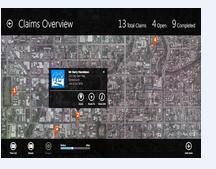 Eight developer previews later, Microsoft’s app store is beginning to take shape. Microsoft has gone back in time to see how development has progressed.
Eight developer previews later, Microsoft’s app store is beginning to take shape. Microsoft has gone back in time to see how development has progressed.
A new version of Windows is always exciting, and Windows 8 is no different with its major changes
If you’ve been following the development of Windows 8 like we have, you’ll notice how the operating system has gone from being strictly for developers to something that looks near-ready for release in the Release Preview, the latest preview of the operating system to be available to the public. On its Building Windows 8 Blog, Microsoft has gone back in time to talk how development on the operating system progressed.
Microsoft began talking to developers in 2011 by introducing engineering tools, and had released eight developer previews since September 2011 (the first went live at the //build conference in Anaheim, California); that includes the more limited developers previews, and the more widely available Consumer and Release Preview.
Despite the different audiences, all of the builds had the same four goals: bring new capabilities and APIs; simplifying Metro app development, which Microsoft is doing a good job of through its workshops and the ability to develop for Windows Phone 8 and Windows Phone 8 concurrently; improving performance and reliability, which is certainly the case in the Release Preview; and responding to developer feedback.
When the Consumer Preview was launched in February 2012, Microsoft had added over 1000 new Windows RT – the limited version of Windows 8, designed with tables in mind – APIs.
Progression
Developer Preview 6 and 7 were released in April and May respectively, and when the Release Preview launched on May 31 334 new APIs were integrated. Clearly, rapid refinement is important and is something Apple does well with its numerous developer previews before the next iOS release.
Other improvements included templates in Visual Studio, and design tools to make sure developers adhere to the Metro design guidelines. Another important move if Microsoft wants to create a consistency across its app design, something Google only launch January this year with its design guidelines.
Microsoft also said apps will change between now and the Release Preview, and some apps haven’t been released on the Windows 8 Store because developers are waiting for the final version to make final changes.

